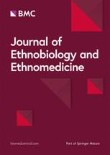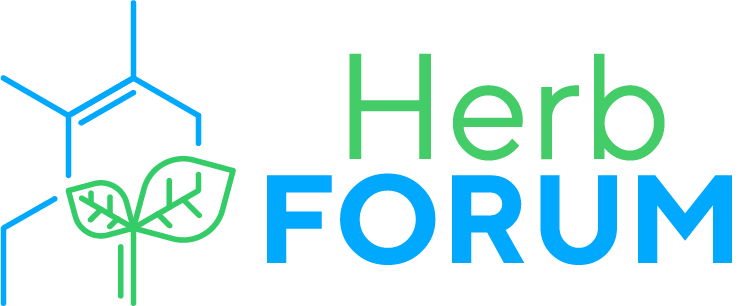This thread will be used to list journals and professional publications that are relevant to herbalists. This initial post will be used to create a running list of the publications. Please feel free to inform us of additional resources in the replies to this thread.
Main Publications
Alternative Medicine Review
Alternative Medicine Review is dedicated to exploring new scientific discoveries that support the significance of the human microbiome as a healing catalyst—and to pushing these studies forward to gain recognition and acceptance in the mainstream medical community.
Ethnobotany Research and Applications
Ethnobotany Research and Applications is an electronic, peer-reviewed, multi-disciplinary and multi-lingual journal devoted to the rapid dissemination of current research in any areas related to Ethnobiology. The journal is currently published by the Department of Ethnobotany, Institute of Botany, Ilia State University, Tbilisi, Georgia in cooperation with Saving Knowledge / Ethnomont. The journal seeks manuscripts that are novel, integrative and written in ways that are accessible to a wide audience. This includes an array of disciplines (Biological and Social Sciences) concerned particularly with theoretical questions in the field of Ethnobiology that leads to practical applications. Articles can also be based on the perspectives of cultural practitioners and others with insights into plants, people and applied research. Database papers, Ethnobiological inventories, Ethnobotanical Notes, Methodology reviews, Education studies and Theoretical discussions are also published.
HerbalGram: The Journal of the American Botanical Council
This peer-reviewed, quarterly journal may be ABC's most visible and important vehicle to increase public awareness and professional knowledge about medicinal herbs. HerbalGram features articles, research reviews, conference reports, and book reviews on medicinal plants, the history of their use, ethnobotanical and modern clinical research, and legal and regulatory developments regarding the marketing and sale of medicinal plant products.
 www.herbalgram.org
www.herbalgram.org
Medical Herbalism: A Journal for the Clinical Practitioner
The purpose of Medical Herbalism is to strengthen the herbal practitioner, to preserve and develop the science and art of herbal medicine, and to promote communication and sharing of clinical methods and experiences.
http://medherb.com/MHHOME.SHTML
The Australian Journal of Herbal and Naturopathic Medicine
The Australian Journal of Herbal & Naturopathic Medicine (AJHNM) offers transparent publication of original research and commentary across the disciplines of naturopathy and western herbal medicine. AJHNM covers the latest research, policy and clinical developments with a firm focus on naturopathic and herbal medicine clinical practice.

 nhaa.org.au
nhaa.org.au
The European Journal of Medicinal Plants
The European Journal of Medicinal Plants (ISSN: 2231-0894) is dedicated to publish high quality papers (Click here for Types of paper) in all areas of medicinal plants research including plant growth and development, agronomic management, plant nutrition, plant physiology, cell biology, molecular biology, biotechnology, medicinal properties, phytochemical constituents, fitoterapia, pharmacognosy, essential oils, ehnopharmacology and phytomedicine. The journal also encourages the submission of useful reports of negative results. This is a quality controlled, open peer reviewed, open access international journal.
 journalejmp.com
journalejmp.com
The Journal of the American Herbalists Guild
The Journal of the American Herbalists Guild promotes, reports and educates on all aspects of therapeutic herbalism, especially those that emphasize the clinical, historical, and professional application of botanical medicine. The Journal is relevant to practitioners, students and teachers of herbalism, and those who manufacture, market and dispense botanical medicines.

 www.americanherbalistsguild.com
www.americanherbalistsguild.com
The Journal of Ethnobiology and Ethnomedicine
Journal of Ethnobiology and Ethnomedicine publishes original research focusing on cultural perceptions of nature and of human and animal health. Journal of Ethnobiology and Ethnomedicine invites research articles, reviews and commentaries concerning the investigations of the inextricable links between human societies and nature, food, and health. Specifically, the journal covers the following topics: ethnobotany, ethnomycology, ethnozoology, ethnoecology (including ethnopedology), ethnogastronomy, ethnomedicine, ethnoveterinary, as well as all related areas in environmental, nutritional, and medical anthropology.

 ethnobiomed.biomedcentral.com
ethnobiomed.biomedcentral.com
The Journal of Herbal Medicine
The Journal of Herbal Medicine, the official journal of the National Institute of Medical Herbalists, is a peer reviewed journal which aims to serve its readers as an authoritative resource on the profession and practice of herbal medicine. The content areas of the journal reflect the interests of Medical Herbalists and other health professionals interested in the clinical and professional application of botanical medicines. The objective is to strengthen the research and educational base of herbal medicine with research papers in the form of case studies, original research articles and reviews, monographs, clinical trials and relevant in vitro studies. It also publishes policy statements, opinion pieces, book reviews, conference proceedings and profession related information such as pharmacovigilance reports providing an information source for not only the Herbal Practitioner but any Health professional with an interest in phytotherapy.
 www.sciencedirect.com
www.sciencedirect.com
Main Publications
Alternative Medicine Review
Alternative Medicine Review is dedicated to exploring new scientific discoveries that support the significance of the human microbiome as a healing catalyst—and to pushing these studies forward to gain recognition and acceptance in the mainstream medical community.
Ethnobotany Research and Applications
Ethnobotany Research and Applications is an electronic, peer-reviewed, multi-disciplinary and multi-lingual journal devoted to the rapid dissemination of current research in any areas related to Ethnobiology. The journal is currently published by the Department of Ethnobotany, Institute of Botany, Ilia State University, Tbilisi, Georgia in cooperation with Saving Knowledge / Ethnomont. The journal seeks manuscripts that are novel, integrative and written in ways that are accessible to a wide audience. This includes an array of disciplines (Biological and Social Sciences) concerned particularly with theoretical questions in the field of Ethnobiology that leads to practical applications. Articles can also be based on the perspectives of cultural practitioners and others with insights into plants, people and applied research. Database papers, Ethnobiological inventories, Ethnobotanical Notes, Methodology reviews, Education studies and Theoretical discussions are also published.
Ethnobotany Research and Applications
Ethnobotany Research and Applications - A Journal of Plants, People and Applied Research
ethnobotanyjournal.org
HerbalGram: The Journal of the American Botanical Council
This peer-reviewed, quarterly journal may be ABC's most visible and important vehicle to increase public awareness and professional knowledge about medicinal herbs. HerbalGram features articles, research reviews, conference reports, and book reviews on medicinal plants, the history of their use, ethnobotanical and modern clinical research, and legal and regulatory developments regarding the marketing and sale of medicinal plant products.
The Journal of the American Botanical Council - American Botanical Council
Medical Herbalism: A Journal for the Clinical Practitioner
The purpose of Medical Herbalism is to strengthen the herbal practitioner, to preserve and develop the science and art of herbal medicine, and to promote communication and sharing of clinical methods and experiences.
http://medherb.com/MHHOME.SHTML
The Australian Journal of Herbal and Naturopathic Medicine
The Australian Journal of Herbal & Naturopathic Medicine (AJHNM) offers transparent publication of original research and commentary across the disciplines of naturopathy and western herbal medicine. AJHNM covers the latest research, policy and clinical developments with a firm focus on naturopathic and herbal medicine clinical practice.

Australian Journal of Herbal and Naturopathic Medicine - Naturopaths & Herbalists Association of Australia (NHAA)
The Australian Journal of Herbal & Naturopathic Medicine (AJHNM) offers transparent publication of original research and commentary across naturopathy and western herbal medicine.
The European Journal of Medicinal Plants
The European Journal of Medicinal Plants (ISSN: 2231-0894) is dedicated to publish high quality papers (Click here for Types of paper) in all areas of medicinal plants research including plant growth and development, agronomic management, plant nutrition, plant physiology, cell biology, molecular biology, biotechnology, medicinal properties, phytochemical constituents, fitoterapia, pharmacognosy, essential oils, ehnopharmacology and phytomedicine. The journal also encourages the submission of useful reports of negative results. This is a quality controlled, open peer reviewed, open access international journal.
European Journal of Medicinal Plants
European Journal of Medicinal Plants (ISSN: 2231-0894) is dedicated to publish high quality papers (Click here for Types of paper) in all areas of medicinal plants research including plant growth and development, agronomic management, plant nutrition, plant physiology, cell biology, molecular...
The Journal of the American Herbalists Guild
The Journal of the American Herbalists Guild promotes, reports and educates on all aspects of therapeutic herbalism, especially those that emphasize the clinical, historical, and professional application of botanical medicine. The Journal is relevant to practitioners, students and teachers of herbalism, and those who manufacture, market and dispense botanical medicines.

JAHG Issues and Sample Articles
The Journal of the American Herbalists Guild promotes, reports and educates on all aspects of therapeutic herbalism, especially those that emphasize the clinical, historical, and professional application of botanical medicine. The Journal is relevant to practitioners, students and teachers of...
The Journal of Ethnobiology and Ethnomedicine
Journal of Ethnobiology and Ethnomedicine publishes original research focusing on cultural perceptions of nature and of human and animal health. Journal of Ethnobiology and Ethnomedicine invites research articles, reviews and commentaries concerning the investigations of the inextricable links between human societies and nature, food, and health. Specifically, the journal covers the following topics: ethnobotany, ethnomycology, ethnozoology, ethnoecology (including ethnopedology), ethnogastronomy, ethnomedicine, ethnoveterinary, as well as all related areas in environmental, nutritional, and medical anthropology.

Journal of Ethnobiology and Ethnomedicine
Journal of Ethnobiology and Ethnomedicine covers the exchange of innovative research across ethnobiology and ethnomedicine. The journal looks for original ...
The Journal of Herbal Medicine
The Journal of Herbal Medicine, the official journal of the National Institute of Medical Herbalists, is a peer reviewed journal which aims to serve its readers as an authoritative resource on the profession and practice of herbal medicine. The content areas of the journal reflect the interests of Medical Herbalists and other health professionals interested in the clinical and professional application of botanical medicines. The objective is to strengthen the research and educational base of herbal medicine with research papers in the form of case studies, original research articles and reviews, monographs, clinical trials and relevant in vitro studies. It also publishes policy statements, opinion pieces, book reviews, conference proceedings and profession related information such as pharmacovigilance reports providing an information source for not only the Herbal Practitioner but any Health professional with an interest in phytotherapy.
Journal of Herbal Medicine | ScienceDirect.com by Elsevier
Read the latest articles of Journal of Herbal Medicine at ScienceDirect.com, Elsevier’s leading platform of peer-reviewed scholarly literature
Last edited:


